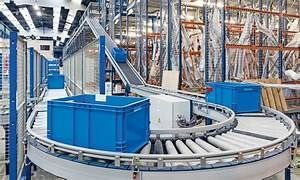Enhanced training and maintenance
Improved Delivery & Navigation
Interactive loading and unloading
3s service automation solutions - HARNESS THE POWER OF AUGMENTED REALITY IN LOGISTICS
Augmented Reality and Logistics: Reshaping the future of Supply Chain
Augmented Reality (AR) is emerging as a transformative force in various sectors, with logistics being one of the primary benefactors. This cutting-edge technology is reshaping the supply chain by enhancing visibility, improving accuracy, and creating interactive experiences.
AR equips logistics with a blend of digital and physical worlds, overlaying digital information onto the real world. This integration is revolutionizing the way logistics companies approach tasks such as warehousing, transportation, and delivery.
In the retail sector, AR is proving to be a game-changer within logistics. By integrating AR technology into warehousing and inventory management, retailers are streamlining their operations significantly. For instance, AR-enabled devices allow warehouse workers to visualize inventory information in real-time as they navigate through shelves, expediting the picking process and minimizing errors.
This article will explore the evolution of AR in logistics, highlighting the key components of an AR-enabled logistics ecosystem and showcasing real-world applications. The aim is to understand how AR is not just an innovative addition but a necessity in the evolving landscape of logistics.
Evolution of AR in Logistics
Early adoption
Initially, AR found its application in logistics primarily for warehouse operations. Companies began using AR for tasks like picking and placing goods in warehouses. With the help of AR headsets, workers could see digital overlays on physical objects, which guided them to the right location and provided information about the items.
This early adoption of AR showcased its potential to streamline warehouse operations, making them faster and reducing errors. It also demonstrated AR's capability in training and guiding personnel through complex logistics environments.
Expansion into advanced applications
As AR technology matured, its applications in logistics became more comprehensive and sophisticated.
- Enhanced training and maintenance: AR provides interactive training modules for logistics staff. It allows for virtual simulations of real-world scenarios, enabling workers to gain experience in a controlled, digital environment. Additionally, AR aids in equipment maintenance by overlaying digital instructions and diagrams, helping technicians perform repairs and maintenance efficiently.
- Improved delivery and navigation: In transportation, AR assists drivers with navigation by providing real-time information overlay on their field of vision. This technology can highlight the optimal routes, alert drivers to potential hazards, and offer real-time traffic updates.
- Interactive loading and unloading: AR helps in loading and unloading processes by visualizing the best way to arrange packages in a vehicle or container, maximizing space utilization and ensuring stability.
Components of AR in logistics
Component #1: AR devices
AR devices in logistics include a range of hardware designed to superimpose digital data onto the physical world.
The most common are headsets and smart glasses, like Microsoft HoloLens and Google Glass, which offer hands-free operation, crucial for tasks requiring manual handling. These devices come equipped with built-in displays, cameras, and sometimes even voice control, allowing workers to interact with the digital overlays without interrupting their workflow.
Mobile devices, such as tablets and smartphones, are also widely used for AR in logistics. They are more accessible and can be easily integrated into existing operations. These devices leverage their cameras and screens to display AR content, providing a flexible and cost-effective solution.
The effectiveness of these devices depends on factors like field of view, battery life, comfort, and the ability to work in various lighting conditions. Advancements in AR device technology continue to address these challenges, making them more adaptable to the diverse environments found in logistics.
Component #2: Software applications
Software applications are the backbone of AR systems in logistics. These applications are designed to process data from various sources and create the digital overlays seen through AR devices. They range from simple visual guides to complex interactive systems that can provide real-time information about inventory, navigation, and task management.
These applications are often customized to meet specific logistics needs. For example, in a warehouse, an AR application might display the most efficient route to pick items, while in transportation, it could show real-time traffic updates and delivery information.
Integration with existing Warehouse Management Systems (WMS) or Transportation Management Systems (TMS) is also crucial, allowing for seamless data flow and maximizing the utility of AR.
Component #3: Sensors and cameras
Sensors and cameras play a pivotal role in the functionality of AR in logistics. These components are essential for capturing information about the surrounding environment and the user's interactions within it. For instance, depth sensors and cameras help in understanding the layout of a space, facilitating accurate overlay of digital information.
In logistics, these sensors can be used to track the movement of goods and equipment, ensuring accurate placement of virtual elements in the physical world. They also enable gesture and voice recognition, allowing for intuitive interaction with the AR system. The precision and reliability of these sensors directly impact the effectiveness of the AR experience.
Component #4: Data analytics
The vast amount of data generated by AR systems in logistics is a goldmine for optimization and decision-making. Data analytics tools are employed to process this data, offering insights into operations like inventory levels, equipment status, and workflow efficiency.
These analytics can be used for predictive maintenance, identifying potential equipment failures before they occur. They also help in optimizing routes for transportation, reducing fuel costs and delivery times. In warehousing, data analytics can improve space utilization and inventory management, leading to increased efficiency and reduced operational costs.
The integration of AR with Big Data and AI technologies is further enhancing the capabilities of AR in logistics, providing more sophisticated analytics and predictive models. This combination allows logistics companies to move towards a proactive rather than reactive management style.






